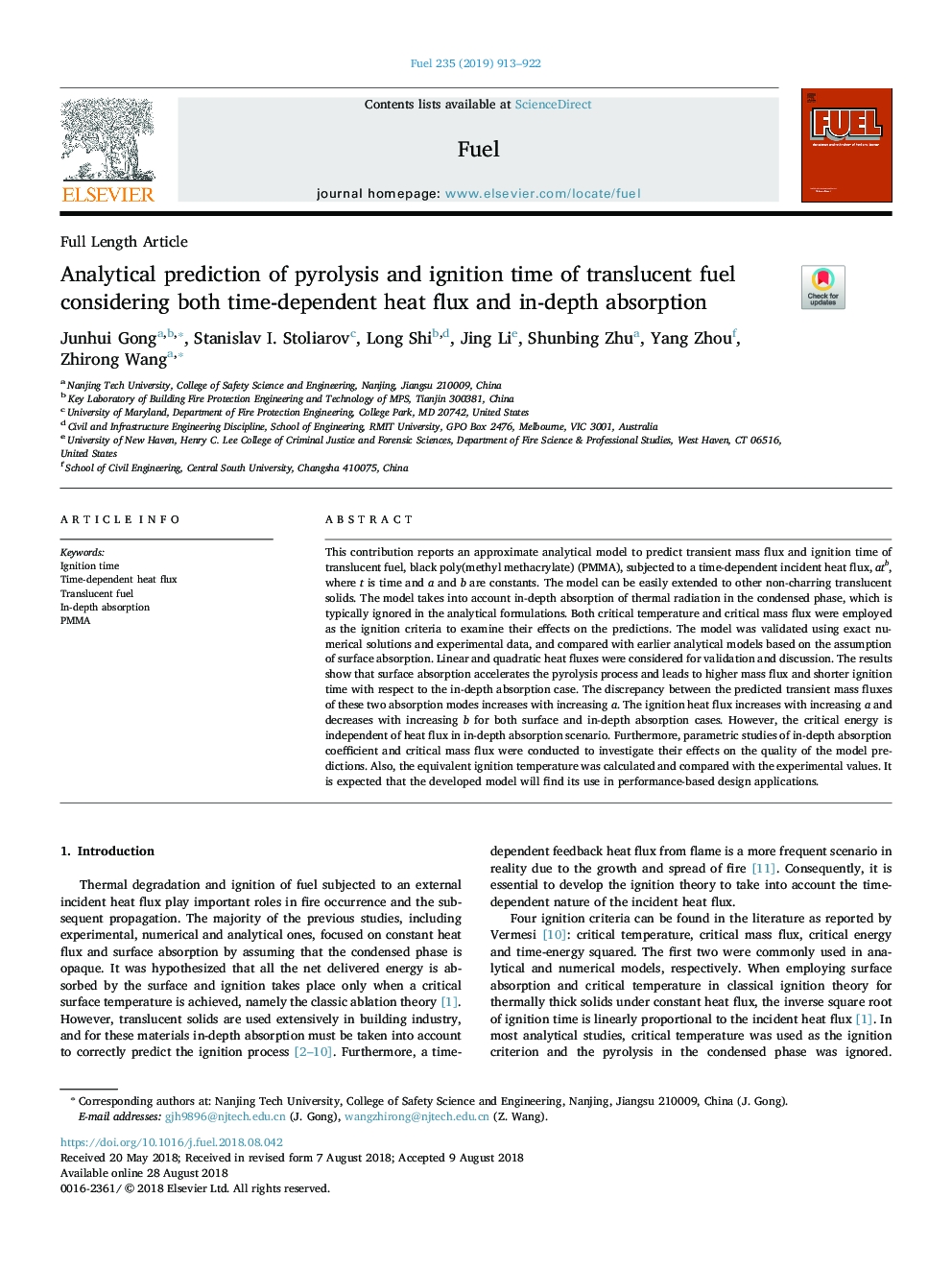| کد مقاله | کد نشریه | سال انتشار | مقاله انگلیسی | نسخه تمام متن |
|---|---|---|---|---|
| 11000556 | 1424929 | 2019 | 10 صفحه PDF | دانلود رایگان |
عنوان انگلیسی مقاله ISI
Analytical prediction of pyrolysis and ignition time of translucent fuel considering both time-dependent heat flux and in-depth absorption
ترجمه فارسی عنوان
پیش بینی تحلیلی پیررولیز و زمان احتراق سوخت شفاف با توجه به شار گرما وابسته به زمان و جذب عمق
دانلود مقاله + سفارش ترجمه
دانلود مقاله ISI انگلیسی
رایگان برای ایرانیان
کلمات کلیدی
موضوعات مرتبط
مهندسی و علوم پایه
مهندسی شیمی
مهندسی شیمی (عمومی)
چکیده انگلیسی
This contribution reports an approximate analytical model to predict transient mass flux and ignition time of translucent fuel, black poly(methyl methacrylate) (PMMA), subjected to a time-dependent incident heat flux, atb, where t is time and a and b are constants. The model can be easily extended to other non-charring translucent solids. The model takes into account in-depth absorption of thermal radiation in the condensed phase, which is typically ignored in the analytical formulations. Both critical temperature and critical mass flux were employed as the ignition criteria to examine their effects on the predictions. The model was validated using exact numerical solutions and experimental data, and compared with earlier analytical models based on the assumption of surface absorption. Linear and quadratic heat fluxes were considered for validation and discussion. The results show that surface absorption accelerates the pyrolysis process and leads to higher mass flux and shorter ignition time with respect to the in-depth absorption case. The discrepancy between the predicted transient mass fluxes of these two absorption modes increases with increasing a. The ignition heat flux increases with increasing a and decreases with increasing b for both surface and in-depth absorption cases. However, the critical energy is independent of heat flux in in-depth absorption scenario. Furthermore, parametric studies of in-depth absorption coefficient and critical mass flux were conducted to investigate their effects on the quality of the model predictions. Also, the equivalent ignition temperature was calculated and compared with the experimental values. It is expected that the developed model will find its use in performance-based design applications.
ناشر
Database: Elsevier - ScienceDirect (ساینس دایرکت)
Journal: Fuel - Volume 235, 1 January 2019, Pages 913-922
Journal: Fuel - Volume 235, 1 January 2019, Pages 913-922
نویسندگان
Junhui Gong, Stanislav I. Stoliarov, Long Shi, Jing Li, Shunbing Zhu, Yang Zhou, Zhirong Wang,
